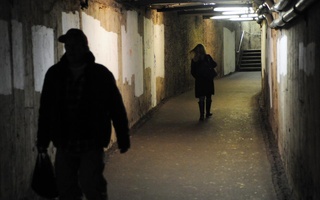On paper, the number of burglaries at Harvard’s Cambridge campus plummeted 91 percent last year, but the decline had more to do with policy in Washington than safety in Cambridge.
A national change in the definition of burglary used for campus crime reporting led the Harvard University Police Department to narrow its categorization of this type of crime. The resulting drop, from 230 reported instances of on-campus burglary in 2008 to 21 in 2009, put the statistic in line with the rest of the Ivy League.
Now, HUPD, as well as campus police departments across the country, must find evidence of trespassing in order to categorize a crime as a burglary, a standard akin to the Federal Bureau of Investigation’s Uniform Crime Reporting standards. Otherwise, the crime would be categorized as a larceny.
Larceny, unlike burglary, is not required to be reported under the Clery Act, a law that mandates yearly disclosures of campus crime statistics.
Prior to the change, universities were instructed to default to the burglary classification, unless evidence suggested an incident was a larceny.
Categorizing thefts as burglaries or larcenies has long been contentious, for HUPD as well as for other university police departments.
“There’s been a lot of controversy in the higher education and law enforcement fields in how to report burglary,” said S. Daniel Carter, director of public policy at Security on Campus, an organization that advocates for transparency in campus crime reporting.
At Harvard, that controversy dates back at least to 2000, when then-HUPD associate director Kevin W. Regan wrote a letter to the Department of Education seeking clarification on the definition of burglary and comparing Harvard’s dramatically higher burglary numbers to those of other Ivy League schools.
“As you can easily see, it appears that our report has us out on an island in comparison to other Universities,” Regan, who is now HUPD deputy chief, wrote.
Despite Regan’s letter, the controversy remained unresolved, with Harvard adhering to a wider definition of burglary than many other schools.
“There’s absolutely no question that there’s been inconsistent applications of Clery definitions and guidelines by schools across the country,” Carter said.
The classification of thefts was among those discrepancies, with “a definite preference to default to the less inclusive definition,” which was larceny, according to Carter.
“It was technically a violation of the act,” he said.
In 2005, the Department of Education issued a handbook that explained crime reporting requirements for universities. In its definition of burglary, the handbook stated that if the police do not have evidence that suggests a larceny took place, the crime should be classified as a burglary.
Since then, Harvard’s burglary incidence outpaced its peers. For example, in 2007, Harvard reported 259 incidents of burglary on its Cambridge campus, while Columbia’s Morningside campus had 112 reports and the University of Pennsylvania’s Main Campus had 41.
Read more in News
Event Honors Growth in AfricaRecommended Articles
-
Harvard Ranks #20 Most Dangerous (Maybe)<p></p><p>When it comes to rankings, Harvard likes to buckle down and remain on the top—even if it's for the "25 Colleges with Worst Crime Rankings." In an article published today by The Daily Beast, Harvard made the grade as the #20 most dangerous college campus in the United States, and claimed the distinction of reporting more on-campus crime than any other University on the list.</p><p>Surprised? Not exactly. But you have to consider that Yale, which landed in national headlines after the grisly murder of grad student Annie Le, is ranked #23—that is, slightly less dangerous than dear old Cambridge. The future seems bleak.</p><p>Rounding out the rankings are heavyweights like Brown at #18, MIT at #5, Tufts at #4, and Emerson College, located in downtown Boston, as #1. How exactly did the Daily Beast, an online news media best known for its Cheat Sheet on "read this skip that", decide that Harvard, along with what seems like all of the schools in Boston, is so dangerous?</p><p>
-
 MBTA Crime Rate Hits Record Low
MBTA Crime Rate Hits Record Low -
Amid Decreases, Robberies and Aggravated Assaults RiseThe number of robbery and aggravated assault reports on and around campus increased last year, while most other indicators of crime remained unchanged or dropped, according to statistics released by the Harvard University Police Department.
-
Virginia Tech Verdict RepealedThough the United States Department of Education has repealed its December verdict that found Virginia Tech’s response to a 2007 campus shooting in violation of the Clery Act, emergency protocol at universities will likely remained unchanged.
-
Crime Rate in Cambridge Drops in 2012The year 2012 saw fewer crimes in Cambridge, continuing a trend where the overall serious crime rate decreased for each of the last three years and violent crime declined for each of the past four.
-
Cambridge Crime Continues Downward TrendSerious crime in Cambridge decreased significantly during the first half of 2014, according to a recent report released by the Cambridge Police Department.













